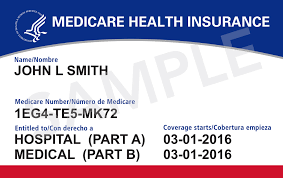Temporomandibular Joint (TMJ) Disorder

Anna Lee, MD
Dr. Anna Lee, a board-certified pain management specialist in Cresskill, NJ, is the pioneer of Automated Intramuscular Stimulation (A-IMS®), a revolutionary non-invasive pain relief technique. With over 15 years of experience, Dr. Lee is dedicated to helping patients achieve lasting relief from chronic pain without surgery or medications.
What is the Temporomandibular Joint (TMJ) Disorder?
Temporomandibular joint disorder (TMJ) refers to a group of conditions that affect the temporomandibular joints, which connect the jaw to the skull. These joints allow the movements of the jaw, such as talking, chewing, and yawning. When there is dysfunction in these joints or the muscles that control them, pain and discomfort can occur
Causes of Temporomandibular Joint Disorder (TMJ) Disorder
The exact causes of TMJ are not always clear, but they may include:
1. Jaw or head injuries: Such as accidents or direct trauma affecting the joint.
2. Muscle disorders: Tension or spasms in the muscles that control chewing, which can cause pain.
3. Dental misalignment: Issues like bruxism (teeth grinding) or an improper bite that affect the movement of the jaw.
4. Arthritis: In cases of rheumatoid arthritis or osteoarthritis, the joints can become inflamed and cause pain.
5. Emotional stress: Stress can contribute to tightening of the facial muscles, affecting jaw function.
6. Hereditary factors: Some individuals may have a genetic predisposition to developing TMJ problems.

Common symptoms of TMJ (Temporomandibular Joint Disorder)
1. Pain or tenderness in the jaw, ear, facial muscles, or neck.
2. Popping, clicking, or locking when opening or closing the mouth.
3. Difficulty or pain when chewing.
4. Frequent headaches or migraines.
5. Facial pain when touching certain areas.
6. Tinnitus (ringing in the ears).
Treatment for Temporomandibular Joint (TMJ) Disorder
The treatment for TMJ focuses on relieving pain and improving jaw function. Depending on the cause and severity of the dysfunction, several options may be considered:
1. Conservative Therapies
- Jaw rest: Avoiding intense jaw movements (such as chewing gum or hard foods).
- Heat or cold therapy: Using an ice pack or heating pad on the affected area can reduce inflammation and relieve pain.
- Nonsteroidal anti-inflammatory drugs (NSAIDs): Medications like ibuprofen can help reduce inflammation and relieve pain.
- Muscle relaxants: If the jaw muscles are tense or spasming, muscle relaxants can help ease discomfort.
- Physical therapy: Physical therapy techniques can help improve jaw mobility and reduce muscle tension.
2. Behavioral or Psychological Therapy
- Stress management: Techniques such as relaxation, deep breathing, or cognitive-behavioral therapy (CBT) to reduce stress and anxiety, which may contribute to TMJ dysfunction.
- Biofeedback: This technique teaches patients to control physiological responses in the body, such as muscle tension, to prevent bruxism or teeth clenching.
3. Oral Devices
- Nightguards: These devices, also known as mouthguards, are worn over the teeth to prevent grinding during sleep. They can also help relieve pressure on the TMJ.
- Mandibular repositioning devices: In some cases, dentists may recommend devices designed to reposition the jaw into a more comfortable position.
4. Medical Interventions
- Corticosteroid injections: If there is significant inflammation, injections can help reduce it and relieve pain.
- Botox injections: In severe cases of chronic muscle pain, Botox can be used to relax the jaw muscles and reduce symptoms.
5. Surgery
In rare cases, when other options have been ineffective, surgical procedures may be considered:
- TMJ arthroscopy: A minimally invasive procedure that allows for visualization and treatment of the inside of the joint.
- Open joint surgery: This is only used when there is a need to repair severe joint damage, such as dislocations or deformities.
- Temporomandibular joint replacement: In extreme cases, it may be necessary to replace all or part of the affected TMJ.
Prevention and Recommendations
- Avoid bruxism and repetitive movements that may overload the joint.
- Maintain proper posture to reduce strain on the head and neck.
- Practice relaxation exercises to manage stress.
- Avoid chewing hard or gum-like foods.
- Consult with a dentist or healthcare provider if symptoms persist or become painful.
We Accept Most Insurances






